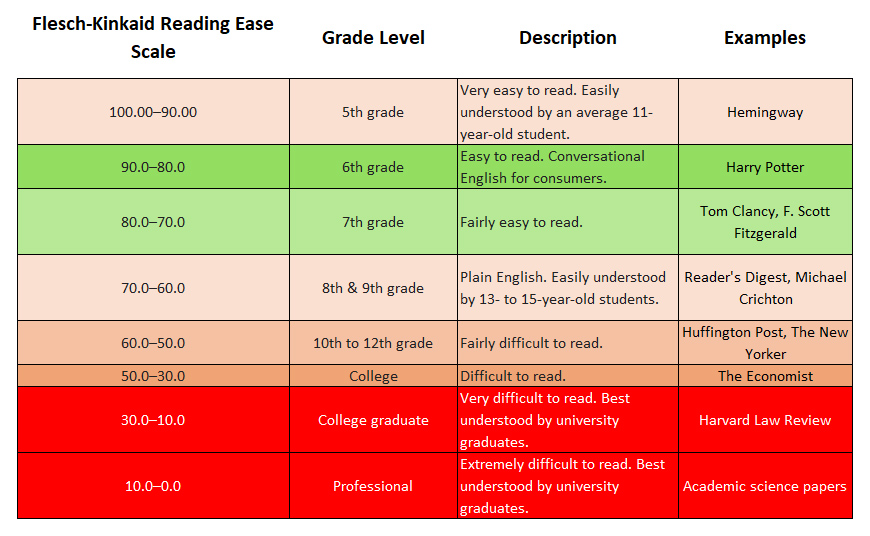This fall, Citizens High School is launching a Civics course that features blogging as its central activity. While the use of blogs in education is not new, it is usually found at the college level and most often as part of a communications, business, or social media course as a way to learn and apply techniques. Occasionally, teachers use blogs as a content delivery device, essentially a one-way, top-down sharing of information.
What is unusual about CHS’s course is that the blog represents the record of the student’s social or political (or whatever) activism. In a real sense, the blog is the activism! Students write about their feelings, actions, frustrations, triumphs, realizations, and plans in a format that is shared not only with their teacher but also with classmates, the local community…and beyond. Just how far beyond is up to a lot of factors—format, content, length, style—but all of them tie back to Google. Google is the key to content sharing on the web.
As a blogger, if you view your blog as a personal work of art, then it might not matter to you if Google finds it, ranks it, or if anyone reads it. But, since you’re here to learn how to write a blog and not simply typing notes-to-self on your iPhone, you probably do want people to read it. If that’s the case, then this guide will be extremely helpful. Even if you’re not interested in finding a large—or any—audience, this article will provide some tips on how better to construct even your most obscure work.
This blog on blogs is for anyone who wants to write an effective blog. It’s not part of the Civics curriculum. CHS, like any other school, organization, or company in the world today, has a content marketing program that relies largely on blog content. For blogs used in a commercial or personal context, this guide is filled with up to date strategies. If you are a student, I am sure it is relevant but make sure you are following the content guide provided by your class!
What is a blog?
A blog is a short form of “weblog” or “web log.” When blogs started, they were nothing more than online journals, sort of digital diaries. The first bloggers wrote about themselves, their lives, and experiences. Much of it was mundane recounting of day-to-day activities, often featuring an unremarkable cast of characters that could be in anyone’s daily life. Kind of like Seinfeld, but not funny. Audiences were small because, in the early 1990s, there were not that many people outside of academia and government who accessed the Internet. Surfing the World Wide Web was a decidedly nerdy activity that had not yet become mainstream. Remember, one of the most popular web pages at the time was a webcam of a goldfish. Seriously. That was big. There were no smartphones with browsers ready to search up useful info—not that searching would have been all that effective if there were: there was no Google.
The unassuming personal weblog was slow to gain popularity—there were only 23 blogs on the Internet in 1999 (Source: Webdesigner Depot/TechJury)—but, once they caught on, blogs quickly became adjunct to entertainment, news, science, and just about every topic. By 2021, 600 million blogs were being written around the world, accounting for 7.5 million blog posts published every day. (Source: Webdesigner Depot)

Today, blogs account for the largest genre of web content. And it’s not just personal anymore. Most companies, large and small, have a blog. Many news outlets are really blog sites. The Huffington Post is considered the largest, most successful blog site in history. Many bloggers are seen as content-area experts, and some blogs are considered acceptable sources for Wikipedia articles. That may speak volumes about blogs or Wikipedia–or both!
The mechanics of getting on the Google map

Everything statistical and mechanical below is based on years of industry studies and data collection that resulted in a fairly standard set of best practices followed by most SEO (search engine optimization) experts and content marketers. Everything structural and stylistic comes from my thirty years of experience as a professional writer: blogger, reporter, columnist, ghostwriter, and marketing copywriter. This guide is, in fact, based on a longer article on my personal writing website that I use when I teach blogging to aspiring copywriters.
You may not agree with what you read here. That’s okay. You don’t have to agree, but you do have to understand a few unarguable key points about blogging in the context of a commercial website:
- Google defines the algorithm (i.e. the rules) by which SEO is determined.
- SEO is the measurement of the interrelationship of data, processes, content, coding, and formatting that determines where a website appears in a web search.
- Content is the part of a website that contributes most to a website’s SEO and ranking.
- The primary form of content on any website is the blog.
Google looks at enormous amounts of user and content data from around the world, measures traffic, and analyzes that data to determines what works. It then creates a statistical snapshot of an ideal website or page and rates other websites and pages higher or lower relative to that ideal. If your website ranks higher than others for a given keyword combination, then its content will appear in searches more frequently and higher up than others.
The world according to Google.
Do you care if Google will notice it or not? I do, because 96% of searches are done in Google and that is how websites get organic traffic.
So, as a blogger who wants to get traffic, it is critically important to understand what Google looks for and how it ranks sites. Traffic is the means to your end goal is, whether that’s selling a product or service or building a reputation as an expert.
Why blogs?
Digital marketing strategists use blogs to boost the word content on a website. More content means more material for Google to look at, rate, rank, and categorize. Blogs can increase the indexing of a website by up to 434% (Source: Tech Client). That means that sites with blogs are that much more likely to have their pages analyzed, ranked, and “remembered” by Google. These are then the pages that the search engine spits out as results to queries. A survey by Social Marketing Writing found that 68.5% of web users feel a blog adds credibility to a website. (Source: Tech Client).
Anyone can write a blog. Seriously. Anybody.
Quality-wise, the majority of the population writes anywhere from okay to horribly. And that’s perfectly fine! You do not have to be a great writer to be a successful blogger. But you must have great content. Original, great content. Do not plagiarize! Google will not report you for copying someone else’s work, but it will lower your site’s overall score for having duplicate copy.
That said, a well-written blog is much more likely to be shared than one that reads like a high school book report dashed off on the bus on the way to school. If you write on a topic that someone wants to learn about and package it in the format Google prefers, then people will find your work.
How long should a blog be?
There is no set length for a blog. If you were to go to Blogger.com today and start a blog account, you could post pieces as long or as short as you choose. You could write a haiku and call it a blog. You could write something the length of Madame Bovary and call it a blog.

A few years back, 1000 words was the gold standard. In March of 2019, Google’s search algorithm changed dramatically and so, by 2021, the average blog grew to 2520 words. (Source: Portent/TechJury) The reason for the increase is a chicken-and-egg kind of thing: it could be that longer blogs work best, so Google ranks them higher; it could be that Google ranks longer blogs higher, so bloggers write to that standard. Either way, it’s a Google thing.
Statistics from Google, HubSpot, and other content evaluating sources tell us that a 2000 word blog is the new sweet spot. Blogs of that length receive 77.2% more backlinks and are more likely to be referenced in in research.

Longer is believable. Believable is valuable.
Another reason we want long blogs is that the longer the blog the more believable readers find the content. For the majority of web researchers, volume equates to value. It is very much like price. The higher the price of a product the more likely people are to find it valuable.
Writing has to be valuable for people to care about it, to want to read it, to look for it, and link to it.
What if I don’t want to write a blog that long?
Then it won’t get published on a commercial website concerned about hosting content that drives traffic. Google subtracts relevance points from sites that have substandard content, which is to be avoided at all costs! The job of any content manager is to make sure blogs and other content are of significant length and in an acceptable, Google-friendly format.
But do people really read 2000 word blogs?
Yes. And no. The truth is that no one reads all of anything on the Internet. As you will see later, we will construct our blogs based on the unfortunate fact that people do not actually read. They skim. Smart bloggers will make their posts appeal to eyes that scan—just like Google scans.
The average reader spends a whopping 37 seconds on a blog post. Clearly, they are not reading the whole thing! In fact, 43% of readers only skim the contents of a blog post. (Source: Quoracreative/TechJury) Knowing that any blog is subject to the same cursory scan, writers have to format accordingly.
Skim, scan, parse. It’s all the same.
When people scan a blog for information, they look for terms that leap out at them and only read the parts that are pertinent to their interests. What jumps out at people are headlines, subheads, and bolded content. In this blog, you have probably noticed that there are subheads placed throughout the piece. That’s so skimmers (i.e. everyone!) can find the topic they are looking for without having to read the whole shebang. Google and readers agree on this.
Relevance is relevant
Before it was a global giant, Google had a simple twofold mission. First, it wanted to make it easier to find information on the web. Then, it needed to rank the information found to make it more valuable to searchers. So, the more relevant the information is to the search query the more valuable it is to the searcher. Google makes sure that you don’t get irrelevant searches. The entire reason there’s a hierarchical search at all is because of relevance.
The more detailed the search term the more relevant are the results. Relevance becomes more apparent when people use “long-tail searches” like “Online school that has drone course and civics” instead of the short tail “online high school.” Long-tail searches are increasingly popular with users. As a plus, generally speaking, the more precise the long-tail search is the less competitive ranking for that combination of keywords.
How to write – style is important!
What’s in a name?
It turns out, the title of your blog has a lot to do with its success. Titles that range between six and eight words fare better than those with shorter or longer titles. The sweet spot is eight-word titles. (Source: Express Writers/TechJury) As we will see with details below, specifics in a title make it more relatable and appealing. Numbers and facts also attract positive attention in titles. If the subject of the blog appears in the first five words of the title, Google ranks it higher.
Simpler is better.
More often than not, a blog is written in an informal style, with a positive tone and short- to medium-length sentences. Shorter sentences without a lot of commas and parenthetical statements are easier to read and skim.
According to the data, the most successful blogs are written at a sixth- to eighth-grade reading level. However, a writer has to know the audience. If the majority of your readers function at an eighth-grade level, do not write collegiate-style copy! If the bulk of your readers are lawyers or doctors, do not write at a sixth-grade level. Seems obvious.
For reference, most newspapers are written at an eighth-grade level. So are comic books. For you literary folks, think Hemingway instead of Faulkner. Hemingway was, not surprisingly, a newspaperman. He’d have made a great blogger! Simplicity and directness are key.

How do we measure readability?
There are several popular scales based on different criteria. The most common in the US is the Flesch-Kinkade scale, developed for the US Navy in the mid-1970s as a way to measure the readability of manuals. It’s not the only system of measurement, but it is ubiquitous since the US Government, military, and Microsoft all adopted it. Check out the chart below to see how common publications and authors rank on the Flesch-Kinkaid scale.
Where do I find the Flesch-Kinkade scale?
Microsoft Word has a handy dandy tool that will tell you Flesch-Kinkaid Grade Level analysis under Readability. Depending on the version of Word you have, this can be found by clicking on the word count button. In 365, it’s a little more difficult to find but it’s there. Somewhere. Or you can go to this excellent website (https://goodcalculators.com/flesch-kincaid-calculator/) and paste in your copy.
If you are wondering, this guide comes out at an 8th-9th grade in Flesch-Kinkaid.
On the topic of tools and applications
Grammar checkers are useful. Or a nuisance. MS Word and Apple Pages have one built in. You can add one to Google Docs. Grammarly works for all of these. My money is on Grammarly for its accuracy and American-standard version of grammar. MS Word’s grammar system will subject you to its own often idiosyncratic and quirky grammar rules, but it also tells you the Flesch-Kincaid Grade Level of your writing. If you are inclined to use a grammar checker, get Grammarly. Even the free version is pretty good.

Anecdote rooted in facts…and keywords
Blogs are usually casual and informal—even experts can be informal—but packed with useful information.
They are also packed with keywords. Every blog is about something. Obviously. The language used in the blog should be structured to include keywords in a natural-sounding, context-relative way. In other words, a blog about training Doberman Pinschers should contain the words a Google user might search for, such as Doberman, training, obedience, Platz, sit, heel, fuss, in sentences, not lists.
The tricky part of blogging to improve SEO is working the target keywords into the story without blatantly “keyword packing,” which features indiscriminate, non- or semi-contextual uses of keywords. Avoid. Always!
Another good practice is to use not only the keyword term you are targeting but also variations on it. So, use “high school” and “secondary school.” Google likes to see that a blog is covering all aspects of a topic, and synonyms indicate thoroughness.
Tell a story
Whenever possible, try to take the reader through a concept. Think journey. Think story. Humans are natural storytellers and learn from hearing narratives. In fact, people will build a story that doesn’t exist from random facts because a story is naturally more appealing than unconnected bits of information.
How to write – structure
Tell ‘em what you gonna tell ‘em,
tell ‘em,
then tell ‘em what you told ‘em
That’s a famous quote attributed to everyone from Dale Carnegie to Aristotle to a 19th Century British minister. It’s a simple guide to how to write everything from a sermon to a business presentation. And a blog.

We all remember the traditional format taught in school: introduction, body, conclusion. It takes many forms—state the thesis, prove the thesis, conclude about how you proved the thesis; identify a problem, define the solution, restate how the solution solved the problem. Same deal.
While there are lots of nuanced blog templates out there, this is generally how I do it. It’s a method I learned as a newspaper reporter and columnist.
Tell ‘em what you’re gonna tell ‘em—
Grab the reader right there in the opening paragraph. The problem or theme has to be expressed in a way that snatches at the emotions. It’s the classic “hook.” You can do it with a dramatic first line that causes dissonance, like, “The most important lesson you can learn as a writer is to stop writing.” What does that mean? Who would not want to find out?
State the problem or central theme using real-world examples. Most often, this is a general concept that you will define down to a fine point in the following section. Throw in a quote early on. It makes the story about someone other than the reader and the writer.
The suggestion of a story often works. “In the space of thirteen days, Dave Smith lost his home, his job, and his family. But he found a reason to keep fighting.” What was the reason he lost everything and what made him want to fight on?
The hook can be more factual and subtle, too: “Only 13% of children of poor families take summer school classes, leading to lower grades and fewer opportunities for college.” You can hint at the solution here, but you don’t have to.
Questions work brilliantly, too. “Why do the children of teachers and pastors have the highest rates of alcohol and drug abuse?” Do they? Why? I want to read more.
There has to be a hook. Without it, readers are cast adrift and have to work to find something to latch onto. Don’t let them work so hard to find a handhold in your narrative. Hook them.

Next, tell ‘em— build the case.
Expand the story. Introduce the problem or theme in increasing detail. Give supporting reasons why writers should stop writing. Tell why Dave lost his home.
Add quotes from people. Quote the kids who are the subject of the story. Firsthand insight into the theme at this point grounds the blog in a human reality. What are the subject’s hopes and dreams? Quote a kid’s mom to discuss a concern or potential bad outcome. Quote an expert or authority figure about the topic but not the person.
Details matter. Put them in to make the people, places, scenarios real. Be specific. “George usually ate a candy bar for lunch” is a good detail but “Lunch normally consisted of nothing more than a Snickers bar his mom bought at the 7-Eleven each morning on the way to school” tells a lot more about George, his life, and his world. In the first example, readers can visualize George in the lunchroom munching on a candy bar. In the second, the reader imagines his harried, down-on-her-luck mom pulling into a lonely parking lot just as the sun washes out the remains of the night, her son half-asleep in the passenger seat.
Add details of the issue and the solution. Use the research you did that you will notate in the references section at the end of the blog. Like a research paper, a blog is better with supporting documentation. Without it, a blog is just opinion. That’s not necessarily bad, but it removes a layer of credibility that comes from multi-source, documented facts.
What if my blog has no real story?
This is entirely possible. Some blogs are series of facts arranged in paragraphs. These could be articles like “Five great reasons to shop at night.” Not a lot of story here. Of course, you can always dress it up by talking about the people who shop at night, get a quote, talk to an expert on nocturnal consumerism. See? It all works if you want it to.
Readers are people, and people like stories. When presented a list of facts, a typical reader will create a story around them in their imaginations. Facts have character, drama, meaning. If you look for it, there is a story in there. Decide if it is to your advantage to bring it to the surface.
Tell ‘em what you told ‘em
Conclusions are usually the most awkward parts of high school and college papers. The safe route is to simply restate the central problem then restate in miniature your discussion and make a summation as the final bit of conclusion. But, to be honest, telling them what you told them is actually pretty dull. A brief restating is sufficient, but here’s how to make the conclusion that much better:
Add another quote that sums up the concepts you addressed in the body or, better still, use the quote to show how the argument you made works in real life:
“The strategies I learned made a difference in my blogging,” Juan said happily. “My page hits went sky high and click-thru rate increased dramatically. I will never go back to my old writing techniques again!”
It’s a good spot to toss in a link—preferably to your own website or a phone number. Depending on the blog, a call to action might be appropriate.
Finishing touches
Get graphic
Blogs are about words. Nevertheless, the best blogs—those that are referred to more often—are those that have graphics. If nothing else, you can put stock photos in your blog that illustrate the topic you are discussing. This helps the reader visualize the subject matter. Free pics can be had at a number of sites, but Pexels.com is a favorite.
To make your blog even more useful, particularly if it is a technical topic, use graphs, charts, and other custom illustrations. For example, in this blog, I used photos from stock sources, screenshots from my word processing software, an Excel table that I made specifically for the blogging, and an illustration. It’s a nice mix of styles and genres of graphical illustrations. Charts and graphs lend to the appearance—if not to the fact—that the blog is well-researched and authoritative.
The rule of thumb for graphics in a blog is one for every 150-300 words, depending on your source. SEO expert Neil Patel suggests one blog for every 150 words. That’s a lot of imagery, but if you have access to it and it works in the context of the blog, there’s no reason not to go that heavy.
Pull quotes can draw attention to major themes
A “pull quote” is a block of text set usually in larger or different type that stands out from the rest of the blog copy. Normally, this would be an actual quote from a person in the blog or an important bit of information. Do not make a pull quote too big or too long or it upsets the flow of the blog. Try to keep the pull quote near where the actual quote comes from in the blog. There’s nothing more irritating to a busy reader than finding an interesting pull quote but not be able to find it in context in the body of the piece.
Promote
The last step in the blogging process is not publishing the blog. Of course, you will do that! Once published, start posting notice of your blog in your social media. If you are LinkedIn member, post an edited version in your profile. At present, LinkedIn doesn’t allow 2000 word articles, so you will have to shorten them to fit. If you are writing about topics that are in your profession, this is a great way to become recognized as an expert. Obviously, Facebook, Instagram, Twitter, Pinterest, even Tik Tok is a great way to get the word out on your blog. Send emails with excerpts and links to people in your industry who might be interested in the content. Posting snippets can be really effective in formats that allow it, chiefly Facebook and LinkedIn. Ask your friends to share your posts.

Reuse and recycle
Once your blog is done, it still has a life! Many blogs can be cut down to make a smaller version that can be a downloadable PDF in the form of a case study or information piece. Turn the blog into an infographic and use that same information on your website, in social media, or as an email attachment. Or, go the other way, and expand your blog into a white paper or small book. Lastly, if you do video, turn the blog into a vlog. You may be able to simply take the blog and use it as a script.
Bibliography
- https://techjury.net/blog/blogging-statistics/
- https://quoteinvestigator.com/2017/08/15/tell-em/
- https://www.goodreads.com/quotes/83305-poor-faulkner-does-he-really-think-big-emotions-come-from
- https://en.m.wikipedia.org/wiki/Flesch–Kincaid_readability_tests
- https://en.m.wikipedia.org/wiki/Dale–Chall_readability_formula
- https://en.wikipedia.org/wiki/History_of_blogging
How to write a blog
Blog Tips:
- Conform to what google says is the standard which is 2000 words
- Word counter.com write at a 6th and 8th grade level ideally
- Short sentences or a mix of short and long
- Do like a speech: tell them what you are going to tell them, then tell them, then tell them you told them
- Set your problem with a story, then create a solution
- Examples from life
- Give a quote: quote from a student, quote from a parent, quote from Jennifer, 2 quotes from Jim Etter
- Quote problem
- Quote solution
- Quote for conclusion- optional
- We’re redefining graduation requirements and so should you- example
- Who is the audience- adult, traditional, international, etc. and keep them in mind
- Casual sound
[2:45 PM] Richard Williamson
https://www.youtube.com/watch?v=On4I1SEADqA
[2:45 PM] Richard Williamson
Gillian Perkins…fablous vlogger
[2:46 PM] Richard Williamson
Slidebean totally different presentation…https://www.youtube.com/watch?v=xD8A7eX26VA
If you want to skip to the simple how–to part of this, go ahead. It’s a ways down toward the bottom. If you want to know the whys behind the how-tos, read from the top. The why is interesting—at least I think so—and it is important to understand the rationale behind the mix of art and science that is blog writing.

Richard Williamson
Chief Marketing Strategist











